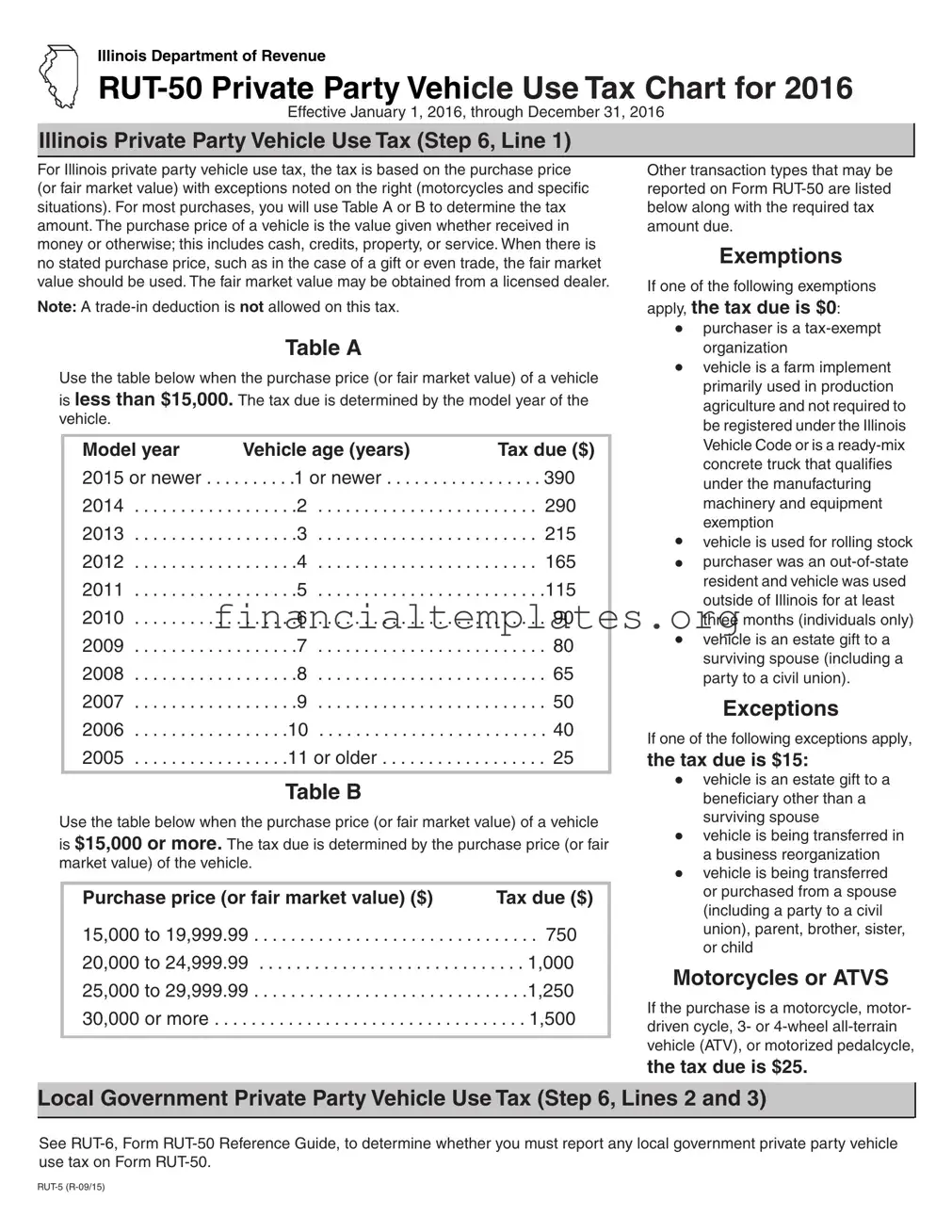The Form 1040, used for submitting annual federal income tax returns by individuals in the U.S., shares key similarities with the Illinois Department of Revenue RUT-50 form. Both forms are integral to the process of reporting and paying taxes, albeit on different scales and for different types of taxes. Where the Form 1040 is comprehensive, capturing an individual's income, deductions, and credits for federal tax purposes, the RUT-50 is specialized, focusing purely on the transactional tax due from the private purchase of a vehicle. Each form, however, requires detailed information about financial transactions over the previous year, ensuring that taxpayers comply with regulations and contribute their fair share to public funds.
The Form 8283, Noncash Charitable Contributions, is another example that parallels the RUT-50. It is designed for individuals who donate property valued over $500 and need to claim deductions on their federal tax returns. Like the RUT-50, which determines tax based on the vehicle's purchase price or fair market value, Form 8283 requires valuations of donated property to calculate potential deductions properly. Both forms play a critical role in ensuring accurate tax reporting, allowing for exemptions under specific conditions, and maintaining transparency in financial contributions, albeit in distinctly different contexts.
Similarly, the Form 6252, Installment Sale Income, exhibits parallels to the RUT-50. The 6252 form is used by individuals who have sold property and plan to receive payments over future years, affecting how they report income for tax purposes. Comparable to the RUT-50, which calculates tax based on the vehicle's purchase price, Form 6252 necessitates understanding and reporting the financial nuances of a transaction over time. Both forms help individuals comply with tax obligations in situations where financial dealings do not adhere to simple one-time payments.
The Schedule SE (Form 1040), Self-Employment Tax, also shares similarities with the RUT-50 in its focus on specific taxpayer activities. Schedule SE is utilized by individuals who are self-employed to determine the taxes owed on income from self-employment, akin to how the RUT-50 is used by Illinois residents to figure the taxes due on a private vehicle purchase. Both documents are instrumental for taxpayers in calculating and fulfilling their tax responsibilities related to personal and business endeavors, ensuring compliance with state and federal laws.
Finally, the Sales Tax Return forms used by businesses to report collected sales tax from customers bear resemblance to the RUT-50 form. While sales tax forms vary by state, they universally require businesses to report sales activities and remit the appropriate tax to the government, similar to the individual obligation under the RUT-50 to report and pay tax on a vehicle purchase. Though one pertains to routine business transactions and the other to a specific type of personal purchase, both sets of forms are crucial for accurately reporting taxable activities to tax authorities.

